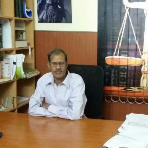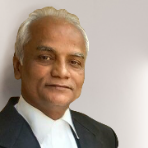Discharging and Quashing in Criminal Cases
Posted On : January 12, 2023

Table of Contents
In criminal cases, it is crucial to consider all available options for the accused, particularly whether to file a petition for Discharge or go before the High Court in a quashing petition. The question of whether the accused should apply for Discharge under Section 227 or Section 239 under the Code of Criminal Procedure, 1973 (Cr.P.C.) to the trial court or apply to the High Court under Section 482 of the Cr.P.C. to have the summoning orders quashed, provided they believe their case has some merit for such relief.
What is Discharge?
The remedy provided to the falsely accused individual under the Criminal Procedure Code of 1973 is known as a Discharge Application. This Code contains the guidelines for submitting a discharge application if the accusations brought against him are untrue. He is entitled to be dismissed if the evidence presented to the court is insufficient to establish the offence and there is no prima facie evidence against him.
Essential elements of Discharge
The following essential components must be present for the Court to assess the Charge sheet and Police Report that were provided to it by the police, in accordance with Section 173:
- If he sees proper, the Magistrate may question the Accused.
- Following that, the prosecution and the accused parties' arguments and their stories would be heard.
- Grounds against the accused should be without merit if no supporting documentation exists. The Court must also be certain that the accused is not the subject of a valid first charge.
The accused is discharged if the aforementioned requirements are met.
When an accused can be discharged in different kinds of cases?
Discharge of accused in warrant cases based on a police report
The final charge sheet under Section 173 of the Code is often filed by the police when their investigation is complete. The court in question then starts the accused's trial. However, Sections 239 and 227 of Cr.P.C. have procedures that allow an accused individual to be released before charges are filed against him. These rules, however, may only be invoked by the Accused in warrant cases.
Discharge of accused in warrant cases instituted on a police report before Magistrate
The final charge sheet against the accused is typically filed by the police when their investigation is complete. After then, the court in question presents the accused with the allegations that have been brought against him. The Cr.P.C., however, provides a procedure that allows the accused to be freed before formal accusations are brought against him.
Suppose the Magistrate determines that the charge against the accused is without merit after carefully reviewing the police reports. In that case, all the documents submitted pursuant to Section 173, the examinations of the accused, if any. After hearing the prosecution and accused, he shall discharge the accused and note his justifications.
Discharge of accused in Sessions Trial
According to Section 227 of the Code, if the Judge determines that there are insufficient grounds to proceed against the accused, after hearing the prosecution's and accused's arguments and taking into account the case file and any documents submitted with it, he shall discharge the accused and note the specifics of his decision. An accused person's Discharge cannot be issued before taking into account the accusations in the chargesheet and the pertinent legal precedent.
Important Case law
The Hon'ble Supreme Court ruled in Smt. Rumi Dhar v. State of West Bengal &Anr. (2009) 6 SCC 364 that the learned Judge should examine the specific charges levelled against each accused individual when evaluating an application for Discharge made in accordance with Section 239 of the Code to determine whether or not a case has been made out at all.
What is Quashing?
It is determined that Section 482 Cr.P.C. is within the ambit of the High Court's inherent powers and is relatively unusual in criminal law. It appears to be the most potent instrument given to the High Court under the Indian Constitution's procedural provisions. It indicates that the High Courts of a specific state are the only ones who may employ this stipulated clause, and the Superior authorities may never revoke the High Courts' inherent power.However, only the courts have the right to use these authorities to provide complete and acceptable justice to the parties in front of them and to prevent misuse of the legal system. In accordance with section 482 CrPC of the new Code, this is done with an inherent capacity to uphold justice, right wrongs, and prevent abuse of the legal system. It is important to note that the high court's inherent powers should only be employed in limited circumstances.The Code of Criminal Procedure (Amendment) Act of 1923 added this section because it was determined that the high courts were unable to provide complete justice when it was determined that the given case demonstrated ex-facie or occasionally prima facie illegality that was frequently observable and obvious.
Essential elements of Quashing
However, it is argued here that this provision includes three scenarios in which such inherent jurisdictional rights may be used. These are as follows:
- To avoid misuse of the court's procedures.
- To fulfil the purposes of justice.
- To put into effect a Cr.P.C. order.
The following points can be used to conclude what is coherent with the goals of 482 Cr.PC: The inherent authority of the High Court is the most potent tool under Section 482 of the Code of Criminal Procedure, and it undoubtedly acts in a particular manner in criminal law. This process is primarily employed to purge the realm of criminal proceedings of all corrupting and malevolent influences.
Important Case Law
In Som Mittal v. Govt. of Karnataka, the Supreme Court ruled that the authority granted by Section 482 Cr.P.C. must only be used in the rarest of circumstances. The use of inherent power, as described in Section 482 of the Code of Criminal Procedure, is an exception rather than the rule. The exception is only used when it is brought to the Court's attention that a serious injustice would have been done if the trial had continued and the accused would have been subjected to needless harassment. At first glance, it would seem to the Court that the trial would likely result in an acquittal.
























